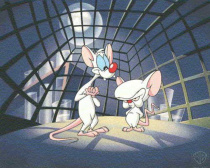When I read a piece of writing, particularly some of the blogs in class, I notice the disjointedness of some people’s writing. Many posts do not contain that flow of relating ideas which keep the audience moving through the paper. By the first paragraph, I’ll simply stop reading and move on to a different post. Writing in which people rant and rave about random topics with no apparent reasoning just doesn’t appeal to me unless the writer is someone I know well. If I write something I know others will be reading, I want it to be well thought out, connected, and make some kind of point.
When I first started writing papers for class back in elementary school I always had to spend a lot of time making my papers read well. I expect perfection of myself and want to write effectively even though I don’t like to write. Writing classes in high school required me to make my writing flow by requiring transition sentences from paragraph to paragraph. Though not so obvious, I still do this automatically when I write. For example, the last couple sentences of a paragraph in my Video Breeding Ground post writes, “My boss at Riverside Mortgage uses ‘You Tube’ to keep in contact with other colleagues she works with; so this site is not just for those having fun, but for the business world as well.” The following sentence in the next paragraph connects well saying, “Those in business don’t necessarily have to be in a
But the connection also deals with syntax along with transitions. If the grammar wording doesn’t make sense to the reader, it is harder for them to understand the purpose of that specific point. This is where I like to have other people’s opinions, including teacher’s and peers. The way I work a sentence may be perfectly clear to me but be confusing for anyone else. Occasionally I can overlook some syntactical awkwardness, like in my Observational Essay post, “Whistling an unrecognizable tune, Jorge, or abuelo (grandpa) Jorge as Joe liked to call him, stomped through the hallway toward us carrying more 12”x12” tiles fitted in a box.” I don’t explain the first part well which made it a little confusing to read. Through this class, I improved in writing more coherently and upgraded my word choice, like in my Reflective Essay when I describe myself at a piano recital, “Swinging my sandaled feet that barely touched the gray carpet, I tried to replay the first notes in by head and imagined by small fingers on the white keys.” This was much clearer to read and gave good imagery.
A good essay also requires strong cohesive language that represents the purpose in a captivating way. This is especially hard to do at the end of a paper, but also where it is most critical. Many people, myself included, can compose a great introduction and body, but fall short on summing up the purpose and why it is important. My third post in particular ended very flat and could have had more about the impact of the topic. The last two sentences say, “The viewers also contribute to his communication by posting comments and critiques with an intimacy not available with T.V. or movies. Overall, every voice can be heard with a view or a post.” This contrasted greatly with the conclusion of my most previous rhetorical analysis essay. The last sentences summarize the purpose and the “so what” question in an interesting way which gives a full sense of completion. In the last two sentences I conclude, “Gamers may have been the specific target audience, but its attention grabbing introduction in conjunction with an up beat argument beckons the audience to try its product because of its overall theme. Coke has produced another feel good message that broadcasts their product as the quintessential ingredient to creating the ideal society.” I expect a good conclusion of others and myself because it completes the paper and reminds the reader of the points focused on and its importance.
Altogether I think a solid piece of writing needs to have an introduction, body and conclusion, but what makes people want to read is the content. I like to do fun and interesting introductions that relate well to my specific audience and good supporting examples for the separate points. Colorful imagery and description intertwined throughout really can turn a monotone paper into one that at least won’t put the audience to sleep. This class has given me the opportunity to practice this method and improve my writing as a whole.







